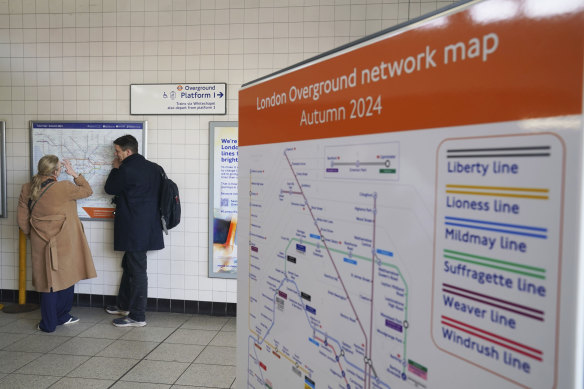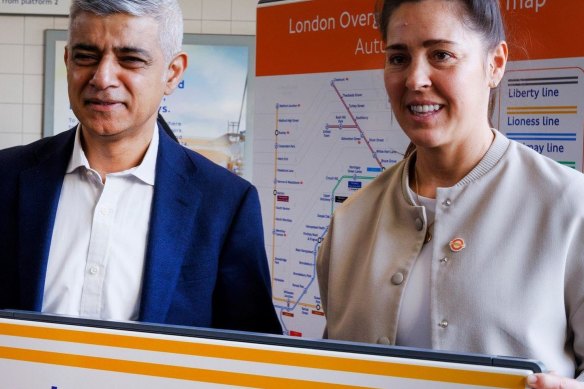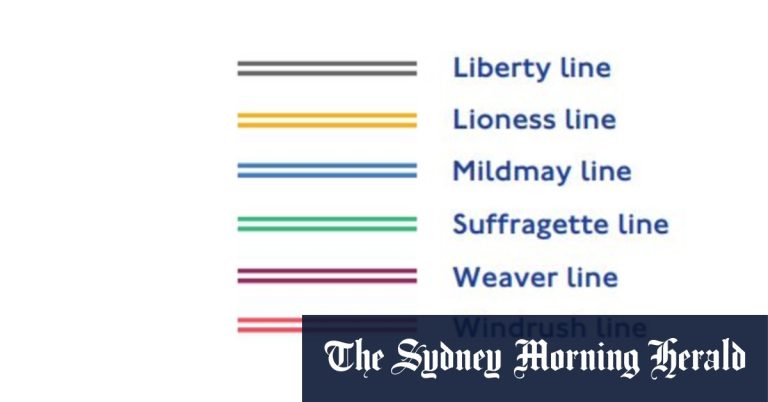However, critics described the move as “virtue signaling”, “patronising” and a “pointless gimmick”.
Professor Jeremy Black, a historian at the University of Exeter, accused Khan of politicizing the railways.
“Khan is politicizing history in an unwanted way,” he told a London newspaper. The Daily Telegraph. “Why do we call the railway Windrush? The Empire Windrush was a ship. It's crazy.”

A nod to the new Windrush line.credit: AP
Transport for London (TfL) said it worked with customers, stakeholders, historians, industry experts and local communities, with the names representing the areas through which the lines travel while representing London's history and cultural diversity. But it appears to have come as a surprise to Londoners, with many feeling the names had been put to them without consultation.
Created by Harry Beck in 1933, the Tube Map has become a London and international icon with its simple, easy-to-use design. But research by TfL proved that some customers found the Overground network confusing. They said it would be easier to navigate if it wasn't one color and name.
download
This announcement was significant enough to warrant an editorial in times, Which said that in seeking to be inclusive, the new names risk excluding communities not honoured.
“While the Windrush family, for example, partly compensates for the Home Office's scandalous treatment of many West Indian immigrants in the mid-20th century, it may also leave those with family origins in India, Pakistan and Bangladesh wondering… Where is the tribute they deserve.And what about the Irish, whose labor helped build much of the UK's transport infrastructure in the first place?
Since coming under Transport for London's control in 2007, the Overground has become the country's second busiest railway line with around 180 million passengers a year. Only the newly built Elizabeth Line, with a capacity of about 220 million cars a year, is busier.
The Euston to Watford Junction section of the Overground, which connects to Wembley Central Station, will be renamed the Lioness Line in honor of the England women's football team that won the Euros over the ground in 2022.

One of the new lines will be named after the England women's football team.credit: Instagram
download
The Windrush Line passes through several areas with strong connections to Caribbean communities, including Dalston Junction and West Croydon, paying homage to the Windrush community. The Weaver Line – which stops around Liverpool Street, Spitalfields and Hackney – passes through several areas of London known for their importance in the textile trade.
Named to celebrate the struggle of a working-class community in London's East End for women's rights, the Suffragette Line will extend to Barking, home of the longest-serving suffragette, Annie Huggett, who died aged 103.
Michael Roberts, chief executive of the capital's transport watchdog, London TravelWatch, said: “The distinction between separate lines should help passengers plan journeys more easily and know which services are running during disruption times just by hearing the name of the line.”
Get a direct note from our foreigners Reporters About what's making headlines around the world. Subscribe to the weekly What in the World newsletter here.

